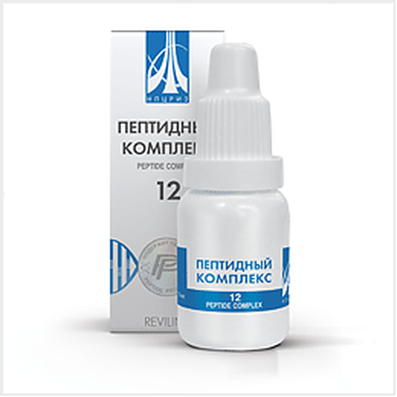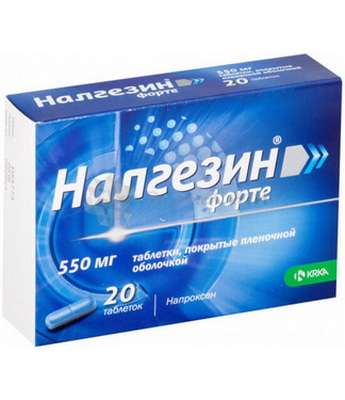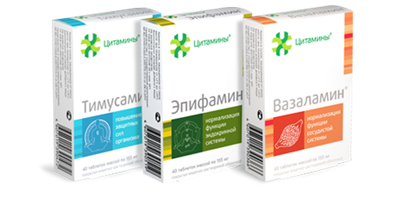Instruction for use: Oxodihydroacridinylacetate sodium
I want this, give me price
Trade name of the drug – Neovir
The Latin name of the substance Oxodihydroacridinylacetate sodium
Natrii oxodihydroacridinylacetas (genus. Natrii oxodihydroacridinylacetatis)
Chemical name
Sodium 10-methylenecarboxylate-9-acridone
Pharmacological groups:
Antiviral drugs (excluding HIV)
Interferon Inductors
The nosological classification (ICD-10)
A31 Infections caused by other mycobacteria: Mycobacterium xenopy; Mycobacterium fortuitum; Mycobacterium kansasii
A55 Chlamydial lymphogranuloma (venereal): Venereal lymphogranuloma; Lymphogranuloma inguinal; Lymphogranuloma chlamydial; Venereal granuloma; Chlamydial lymphogranuloma; Venereal Lymphopathy; Venereal lymphogranulomatosis; Inguinal lymphogranuloma; The fourth venereal disease; Nicola Favra disease; Subacute inguinal purulent microporadenitis; Inguinal lymphogranuloma (inguinal ulceration, inguinal lymphogranulomatosis)
A56 Other chlamydial diseases, sexually transmitted infections: Chlamydial infections; Chlamydia; Tropical bubo
A74.9 Chlamydial infection, unspecified: Chlamydial infections; Uncomplicated chlamydia; Chlamydiasis; Chlamydial infection; Chlamydial infections; Extragenital chlamydia; Chlamydia
B00 Infections caused by the herpes simplex virus [herpes simplex]: Herpes simplex; Herpes virus; Herpes simplex virus; Herpes simplex virus type I and II; HSV; Herpes; Herpes simplex / herpes simplex /; Herpes lips; Herpes simplex; Herpes in patients with immunodeficiency; Labial herpes; Acute herpetic disease of the mucous membranes; Herpes simplex; Herpes simplex skin and mucous membranes; Herpes simplex with skin and mucous membrane damage; Recurrent herpes; Urogenital herpetic infection; Chronic recurrent herpesvirus infection; Herpes-viral infections of various localizations
B01 Varicella [varicella]: Chicken pox; Newborn chickenpox; Varicella Zoster; Smallpox chickenpox; Herpes Varicella zoster
B02 Shingles [herpes zoster]: Herpes zoster; Herpes zoster; Shingles Herpes; Localized shingles; Infection caused by the herpes zoster virus; Shingles
B16 Acute hepatitis B: Viral hepatitis B; Hepatitis B; Acute hepatitis; Vaccination against hepatitis B; Subacute hepatitis; Acute viral hepatitis B; Acute lingering hepatitis B
B17.1 Acute hepatitis C: Viral active hepatitis C; Viral hepatitis C; Hepatitis C
B18.0 Chronic viral hepatitis B with delta-agent: Chronic viral hepatitis B; Chronic active hepatitis B; Chronic viral hepatitis B; Chronic hepatitis B HBeAg-positive
B18.2 Chronic viral hepatitis C: Hepatitis C; Recurrence of chronic hepatitis C; Chronic active hepatitis C; Chronic viral hepatitis C; Chronic hepatitis C without cirrhosis; Chronic hepatitis C with compensated cirrhosis; Chronic hepatitis C
B25 Cytomegalovirus: Generalized CMV infection in patients with AIDS; Cytomegalovirus infection in patients with impaired immunity; Cytomegalovirus infection; Cytomegalovirus infection in patients with habitual miscarriage Cytomegalovirus retinitis; Cytomegalovirus retinitis in AIDS patients; CMV; CMV in AIDS patients; CMV infection; CMV infection in the presence of immunodeficiency; CMV infection in cancer patients with immunosuppression; CMV-pneumonia; CMV retinitis in patients with weakened immunity; CMV retinitis in AIDS patients
B37.0 Thyroid gland: Mycotic seizure; Thrush of the oral cavity; Atrophic candidiasis of the oral cavity; Fungal diseases of the mouth; Fungal infections of the oral cavity; Fungal infections and inflammatory diseases of the mouth; Candidiasis of the digestive tract; Candidiasis of the skin and mucous membranes of the mouth and throat; Candidiasis of the mouth; Candidiasis of the oral cavity; Candidiasis with lesions of the skin and mucous membranes; Candidiasis of the oral mucosa; Candidiasis of the mucous membranes; Candidiasis of mucous membranes and skin; Candidiasis of the mucous membranes of the mouth and throat; Candidiasis of oral cavity and pharynx; Skin and mucous candidiasis of the oral cavity; Oropharyngeal candidiasis; Chronic atrophic candidiasis of the oral cavity; Chronic candidiasis of mucous membranes
B37.2 Skin and Nail Candidiasis: Fungal paronychia; Fungal Eczema; Fungal dermatosis; Fungal diseases of smooth skin; Fungal lesions of smooth skin; Fungal lesions of smooth body skin; Fungal nail infections; Yeast Infection of the Skin; Candidiasis of the skin; Candidiasis of skin and mucous membranes of mouth and mouth; Candidiasis of the skin of nail rollers; Candidiasis of nail rollers; Candidiasis of nails; Candidiasis with lesions of the skin and mucous membranes; Candidiasis of mucous membranes and skin; Candida paronychia; Candidomycosis of the skin; Cutaneous candidal infections; Cutaneous candidiasis; Interdigital fungal erosion; Mycotic dermatitis; Paronychia candida; Superficial form of skin candidiasis; Superficial candidiasis; Superficial candidiasis of nails; Superficial mycosis of the skin; Chronic candidiasis of the skin
B37.3 Candidiasis of the vulva and vagina (N77.1 *): Vaginal candidiasis; Vaginal candidiasis; Vulval candidiasis; Vulvovaginal candidiasis; Vulvovaginal candidiasis; Vulvovaginitis candidiasis; Mycotic vulvovaginitis; Fungal vaginitis; Candidiasis of the vagina; Candidiasis of internal organs; Candidiasis of the urogenital; Candidiasis of the urogenital organs in women; Candidiasis with lesions of the skin and mucous membranes; Candidiasis of the mucous membranes; Candidiasis of mucous membranes and skin; Candidiasis of the vaginitis; Candidiasis vulvitis; Candidiasis vulvovaginitis; Colpitis of fungal etiology; Vaginal yeast infection; Moniliasis vulvovaginitis; Acute vaginal candidiasis; Acute mycosis of the vagina; Superficial candidiasis of the genital mucosa; Recurrent vaginal candidiasis; Recurrent vaginal candidiasis; Urogenital Candidiasis; Chronic vaginal candidiasis; Chronic candidiasis of mucous membranes; Chronic recurrent vaginal candidiasis
B37.4 Candidiasis of other urogenital localizations: Genital candidiasis; Candidiasis of the urogenital; Candidiasis of the mucous membranes; Candiduria; Superficial candidiasis of the genital mucosa; Urogenital Candidiasis; Candidiasis balanitis; Candidiasis balanoposthitis
B37.7 Candida septicemia: Systemic candidiasis; Generalized Candidiasis; Candidemia; Candidiasis generalized; Systemic candidiasis; Severe invasive forms of candidiasis infections
B99 Other infectious diseases: Infections (opportunistic); Infections on the background of immunodeficiency; Opportunistic infections
G05 Encephalitis, myelitis and encephalomyelitis in diseases classified elsewhere: Viral encephalomyelitis; Infectious-allergic encephalomyelitis
G35 Multiple Sclerosis: Disseminated Sclerosis; Multiple sclerosis; Recurrent multiple sclerosis; Secondary-progressive multiple sclerosis; Exacerbation of multiple sclerosis; Mixed forms of multiple sclerosis
J06 Acute upper respiratory tract infections of multiple and unspecified locations: Frequent colds of viral diseases; Infections of ENT organs; Acute respiratory illness of influenza nature; Pain for colds; Acute catarrhal disease; Cold; Colds; Colds; Respiratory infection; Seasonal catarrhal disease; Seasonal colds; Pain in infectious and inflammatory diseases of the upper respiratory tract; Bacterial infections of the upper respiratory tract; Bacterial infections of the respiratory system; Viral respiratory disease; Viral respiratory tract infections; Inflammatory disease of the upper respiratory tract; Inflammatory diseases of the upper respiratory tract; Inflammatory diseases of the upper respiratory tract with difficult to separate sputum; Inflammatory respiratory disease; Secondary infections for colds; Difficult sputum separation in acute and chronic respiratory diseases; Upper respiratory tract infections; Infections of the upper respiratory tract; Respiratory tract infections; Respiratory and lung infections; Infectious-inflammatory diseases of the upper respiratory tract; Infectious-inflammatory diseases of the upper respiratory tract and ENT organs; Infectious-inflammatory diseases of the upper respiratory tract in adults and children; Infectious-inflammatory diseases of the upper respiratory tract; Infectious inflammation of the respiratory tract; Respiratory tract infection; Qatar upper respiratory tract; Catarrh of the upper respiratory tract; Catarrh of the upper respiratory tract; Catarrhal phenomena from the upper respiratory tract; Cough in diseases of the upper respiratory tract; Cough for colds; ARVI; ARI; ARI with phenomena of rhinitis; Acute respiratory infection; Acute infectious-inflammatory disease of the upper respiratory tract; Acute respiratory disease; Persecution in the throat or nose; Respiratory and viral infections; Respiratory diseases; Respiratory infections; Recurrent respiratory tract infections; Secondary infections with influenza; Influenza states; Feverish conditions for influenza
J11 Influenza, virus not identified: Influenza; Influenza in the early stages of the disease; Influenza in children; cold in the chest; Begins flu-like condition; Acute disease parainfluenza; parainfluenza; parainfluenza state; influenza epidemics; The pains of the influenza
Z58.4 Effects of radiation contamination: Radiation damage; Acute radiation damage; Radiation syndrome
Pharmacology
Mode action - Antiviral, immunomodulating.
Immunostimulating effect is due to the induction of interferon synthesis. Increases the ability of interferon-producing cells to produce interferon by induction with a pathological agent (the property persists for a long time after drug discontinuation) and creates high titers of endogenous interferons identified as early alpha and beta interferons in the body. Activates stem cells of the bone marrow, eliminates imbalance in the T-lymphocyte subpopulation with activation of the effector links of T-cell immunity and macrophages. Against the backdrop of tumor diseases, it increases the activity of natural killer cells (due to the production of interleukin-2) and normalizes the synthesis of tumor necrosis factor. Stimulates the activity of polymorphonuclear leukocytes (migration, cytotoxicity, phagocytosis). It has antiviral (against RNA and DNA genomic viruses) and antichlamydia action.
After intramuscular injection, bioavailability exceeds 90%. Cmax in plasma (in the range of doses of 100-500 mg) is recorded after 30 minutes and is accompanied by an increase in the concentration of serum interferon (reaches 80-100 IU / ml plasma at a dose of 250 mg). Easily passes through gistogematicheskie barriers. It is excreted by the kidneys, more than 98% unchanged, T1 / 2 - 60 min. The activity of induced interferons after reaching the maximum gradually decreases and reaches the initial values in 46-48 hours.
When parenteral administration of animals of different kinds of doses, 40-50 times higher than the recommended therapeutic doses for a person, there were no lethal outcomes. The study of chronic toxicity testifies to the absence of a negative effect on the functions of the cardiovascular, nervous, digestive, respiratory, excretory, hematopoietic and other body systems. Mutagenic activity in animal tests, cultures of human cells and bacteria was not revealed. Does not have a damaging effect on the human sex cells. Embryotoxic and teratogenic effects are not revealed.
Application of the substance Oxodihydroacridinylacetate sodium
Prophylaxis and treatment of infectious and inflammatory diseases, correction of immunodeficiency states and immunostimulating therapy: ARVI, incl. Influenza (severe forms); Herpetic infection (Herpes simplex, Varicella zoster) of different localization (severe primary and recurrent forms); Viral encephalitis and encephalomyelitis; Hepatitis (A, B, C, acute and chronic form, including in the period of convalescence); CMV infection on the background of immunodeficiency; Chlamydia, ureaplasma, mycoplasma infection (urethritis, epididymitis, prostatitis, cervicitis, salpingitis, chlamydial lymphogranuloma); Candidiasis and bacterial-candidiasis infections (skin, mucous membranes, internal organs); multiple sclerosis; oncological diseases; Immunodeficiency (radiation, acquired and congenital with oppression of interferon synthesis).
Contraindications
Hypersensitivity, severe renal and cardiovascular insufficiency, hyperimmune variant of fulminant form of acute viral hepatitis, autoimmune diseases.
Restrictions
Children's age (safety and efficacy in children are not defined).
Applicationin pregnancy and breastfeeding
During pregnancy and during lactation, it is possible if the expected effect of therapy exceeds the potential risk to the fetus and newborn.
The FDA action category for fetus is not defined.
Side effects of the substance Oxodihydroacridinylacetate sodium
Allergic reactions; Subfebrile, accompanied by an aching joint; With the IM introduction - a local rapidly passing soreness at the injection site.
Interaction
Weaken the effect of immunosuppressive drugs.
Routes of administration
IM, Inside.
Precautions measures
Treatment should be carried out under the supervision of a doctor and when monitoring the immune status. With intolerance of the subfebrile condition, it is recommended that NSAIDs be taken. To reduce local soreness, it is recommended to inject together with 2 ml of saltless novocaine solution. Use with caution in patients with chronic sluggish and previously asymptomatic infectious processes (combined with antibiotics). In the treatment of chlamydia, they are used together with fluoroquinolones.

 Cart
Cart





